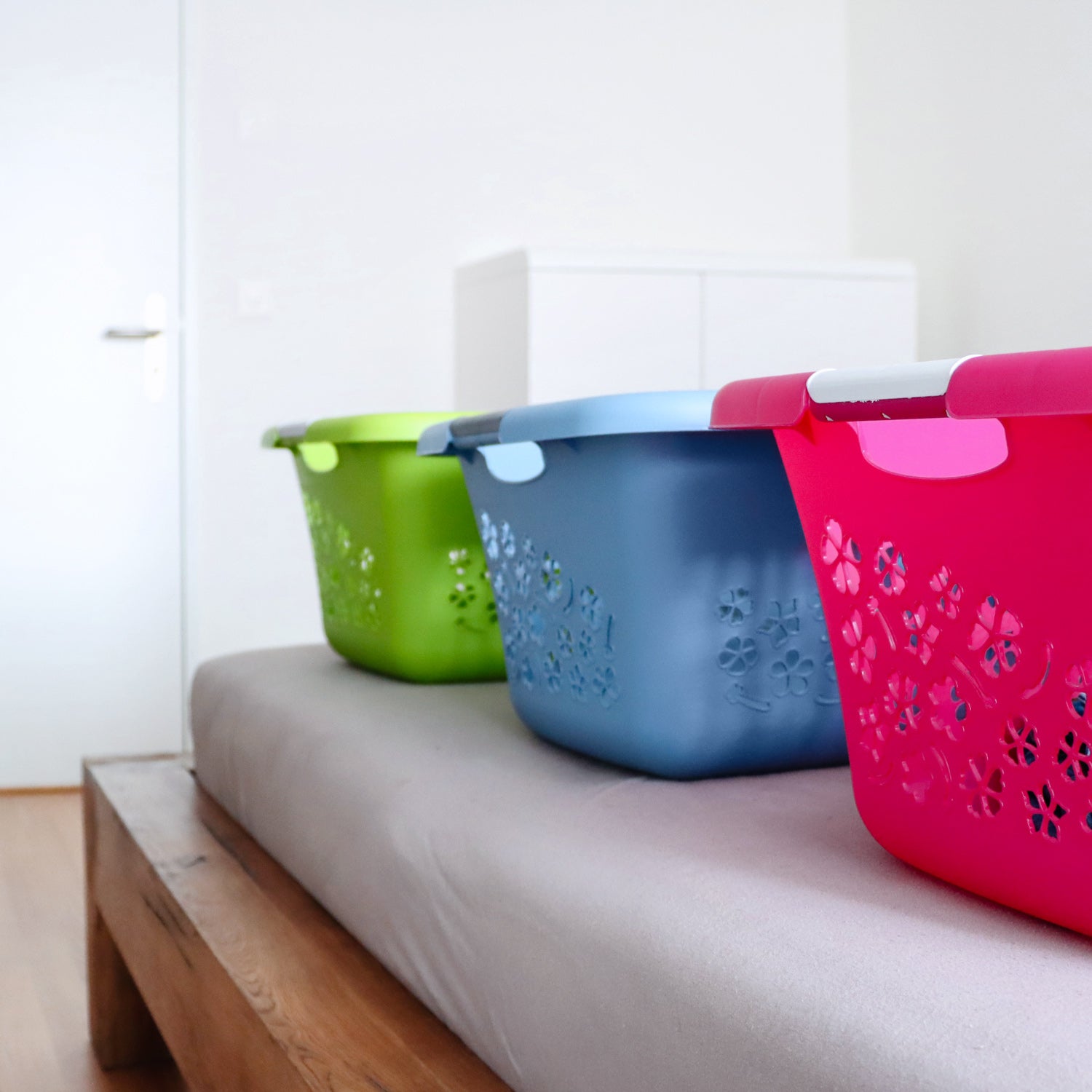Snowdrops and daisies are sprouting, and crocuses and daffodils are right behind them. Spring has arrived - and with it, the time for spring cleaning. However, before you start, you need to get rid of the clutter. With the following tips, decluttering will certainly be easier for you.
How to start?Actually, the beginning is quite "simple". We like to use the following metaphor: How do you eat an elephant? - Just like that, piece by piece.
So if you want to start organizing, you should follow the principle of "one thing at a time". Because taking on too many responsibilities usually has the opposite effect on motivation.
Actually, the beginning is quite "simple". We like to use the following metaphor: How do you eat an elephant? - Just like that, piece by piece.
So if you want to start organizing, you should follow the principle of "one thing at a time". Because taking on too many responsibilities usually has the opposite effect on motivation.
Step 1:First, decide in which room you want to start working. In this room, choose one or several areas from which you want to begin.
First, decide in which room you want to start working. In this room, choose one or several areas from which you want to begin.
Step 2:Now prepare 3 boxes:
- Save
- Maybe (if you're still not sure whether to keep or pass on)
- Throw away/sell/give away
Now prepare 3 boxes:
Step 3:Don't rush and clear the entire area you decided to keep. Sort the contents into categories. For example, if you have your wardrobe in front of you:
- Jackets
- Long sleeve tops
- Short sleeve tops
- Pants
- Lingerie, socks, and pajamas
This step is important to carry out the cleanup in a reasonable way. This system allows us to directly check what we have in excess. It should also facilitate the "distribution".
Don't rush and clear the entire area you decided to keep. Sort the contents into categories. For example, if you have your wardrobe in front of you:
This step is important to carry out the cleanup in a reasonable way. This system allows us to directly check what we have in excess. It should also facilitate the "distribution".
Step 4:Now start sorting everything into three boxes. "Keep" and "throw away/sell/give away" will probably not be difficult for you. But what about "Maybe"?
Now think about why these items ended up in the "Maybe" column. Did you receive it as a gift, or did it once cost a lot of money? These are often reasons why it is hard to part with certain things.
Try to review the entire "Maybe" section again, asking the following questions to make a final decision:
- Why do I have this item?
- What is its purpose?
- When was the last time I used this item?
- Do I still like this item at all?
- Would I buy this product again?
Now start sorting everything into three boxes. "Keep" and "throw away/sell/give away" will probably not be difficult for you. But what about "Maybe"?
Now think about why these items ended up in the "Maybe" column. Did you receive it as a gift, or did it once cost a lot of money? These are often reasons why it is hard to part with certain things.
Try to review the entire "Maybe" section again, asking the following questions to make a final decision:
Step 5:What can remain now takes a permanent place.
Set aside the things you want to keep, sorted by category. To prevent chaos, develop the habit of putting things back in their proper place after use.
What can remain now takes a permanent place.
Set aside the things you want to keep, sorted by category. To prevent chaos, develop the habit of putting things back in their proper place after use.
What should I start with?Start where you can make the biggest changes in the shortest amount of time - in other words, where you will quickly notice success. This will motivate you to take further action.
A good place to start is, for example, the wardrobe. For the simple reason that clothes that are no longer beautiful or do not fit can be easily thrown away without much thought. Moreover, in this area, there are almost no mementos that are hard to get rid of.
Limit the number of clothes by keeping only what you like and feel good in.
If you don't have much time, tackle, for example, the bathroom cabinet, medications, or living room furniture. Make sure you finish what you started. Incomplete work can cause unnecessary stress and have the opposite effect on motivation.
Start where you can make the biggest changes in the shortest amount of time - in other words, where you will quickly notice success. This will motivate you to take further action.
A good place to start is, for example, the wardrobe. For the simple reason that clothes that are no longer beautiful or do not fit can be easily thrown away without much thought. Moreover, in this area, there are almost no mementos that are hard to get rid of.
Limit the number of clothes by keeping only what you like and feel good in.
If you don't have much time, tackle, for example, the bathroom cabinet, medications, or living room furniture. Make sure you finish what you started. Incomplete work can cause unnecessary stress and have the opposite effect on motivation.
When will I finish?You probably don't want to hear this right now, but you will never really be done! We would like to explain why that is. Maybe you are the type of person who cleans, organizes, and reorganizes the house once, and then thinks, "that's it - done."
But... today's consumer society has reached a high level from which it will be difficult for us to escape. As a result, every home accumulates things that we really don't need and that we will sooner or later sell or dispose of. It doesn't always have to be our own neglect to blame. Remember that we often receive gifts that we don't like, that we probably don't need, and that we don't use.
So don't doubt yourself if, after tidying up the whole house, you find things six months later that you really no longer need. It doesn't mean that you were inconsistent in your last action. Because cleaning is a continuous process that essentially never ends. What is practical today may not necessarily be useful tomorrow.
You probably don't want to hear this right now, but you will never really be done! We would like to explain why that is. Maybe you are the type of person who cleans, organizes, and reorganizes the house once, and then thinks, "that's it - done."
But... today's consumer society has reached a high level from which it will be difficult for us to escape. As a result, every home accumulates things that we really don't need and that we will sooner or later sell or dispose of. It doesn't always have to be our own neglect to blame. Remember that we often receive gifts that we don't like, that we probably don't need, and that we don't use.
So don't doubt yourself if, after tidying up the whole house, you find things six months later that you really no longer need. It doesn't mean that you were inconsistent in your last action. Because cleaning is a continuous process that essentially never ends. What is practical today may not necessarily be useful tomorrow.





